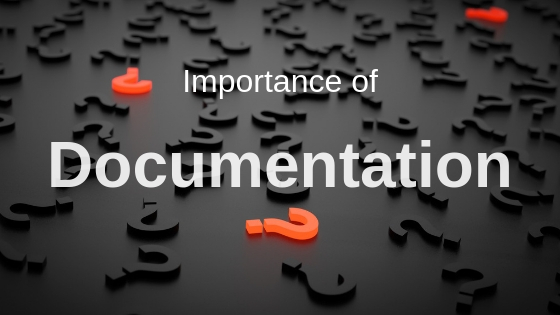
Documentation is basically a written proof of the process flow of functionality. In software industry, documentation plays a vital role in keeping requirements intact to the final functionality. The software industry strives to incorporate the most extreme use cases into programming and hence create a software that has its worth.
While creating a software, it’s very important to focus on the requirement and then proceed in the dedicated direction to create a solution. But, there are many programmers who simply understand the requirement and start writing the code. This is the biggest mistake. A well documented requirement is the profound base to a perfect application in terms of functionality and end user acceptance.
There are various types of documents at each phase of software development that play a vital role in accomplishing the project at its best.
Types of Software Documents
Since the starting and till the end of a software deployment, each phase calls for its document. It’s up to the developers or project owners to decide upon keeping all or some documents. Here’s a list of all such types of documentations:
- Software Requirements Specification Document: The SRS or the Software Requirement Specification Document is the primary document that contains all the details gathered during the software requirement phase. This detailed document is the base to functionality of a software project.
- Design and Architecture Document: This document contains all the details on
-
- Functionality flow between the modules
- Interfaces
- Frameworks
- Data pattern
- Security measures
- Space allocation
- User experience.
The Wireframes and UX roadmap are basic constituents of this document.
-
- Source Code: This document aims at providing information on how the code is written and the logics incorporated. Code Commenting is an integral part of this.
- Document for Verification, Validation and Testing: Verification, Validation and Testing are all very important phase of a software development lifecycle as these determine the Quality Assurance. This document covers the details on
- Testing Strategy
- Test Case
- Test Case Execution Plan
- Test Case Results
- Installation Guide: This is an essential document that guides even a naive user through the installation process.
- User Manual: A User manual is another important document for the end user to understand the functionalities throughout a software. It’s important that this document is written in a way that it provides solution to all the end user queries and a guide to using the digital product.
- Maintenance Document: A maintenance document is a must to keep the software product alive for longer. This document contains known areas of concern in the product and future prospects to add new functionalities and update the existing ones.
Benefits of documentation
It’s not just a piece of writing, it’s a powerful report that helps a software development company to understand and analyse the workflow scenarios. Basically, the more complex project, greater is the number of pages in its documentation. A well maintained documentation instills a confidence in a product and its scope for future enhancements. Let’s now take a walk through to various benefits of creating a software document:
- Better communication on requirements
- Helpful in planning, budgeting and scheduling the software development
- Gives a finer review of designs
- Easier integration of modules and their workflow
- Superior code analysis and inspection
- Effective test cases
- Efficient bug fixing and code improvements
- Robust integration of front end and the back end
- Easier to reuse old code and designs
- Better product quality
- Higher rate of user acceptance
- Helpful in learning and understanding a software at any time
Apart from knowing these benefits, it’s important to understand some important aspects of documentation, which play a crucial role in defining an effective software.
- Follow a standard and globally accepted format for documentation
- Create it while keeping the reader in mind; not the writer
- A document should not contain any kind of ambiguity
- Check for any repetitions
- Keep the documents updated by putting a new version each time a change or improvement is made.
The Inference:
A software document is not a mere document, instead it’s an important nugget in the field of software engineering that helps yield better and refined products each time. Moreover, Requirements Engineers, Business Analysts, Designers, Software Developers, Testing Engineers and all other participants in a software development lifecycle are responsible for creating a document that justifies various phases from requirement gathering till the final deployment and maintenance.







